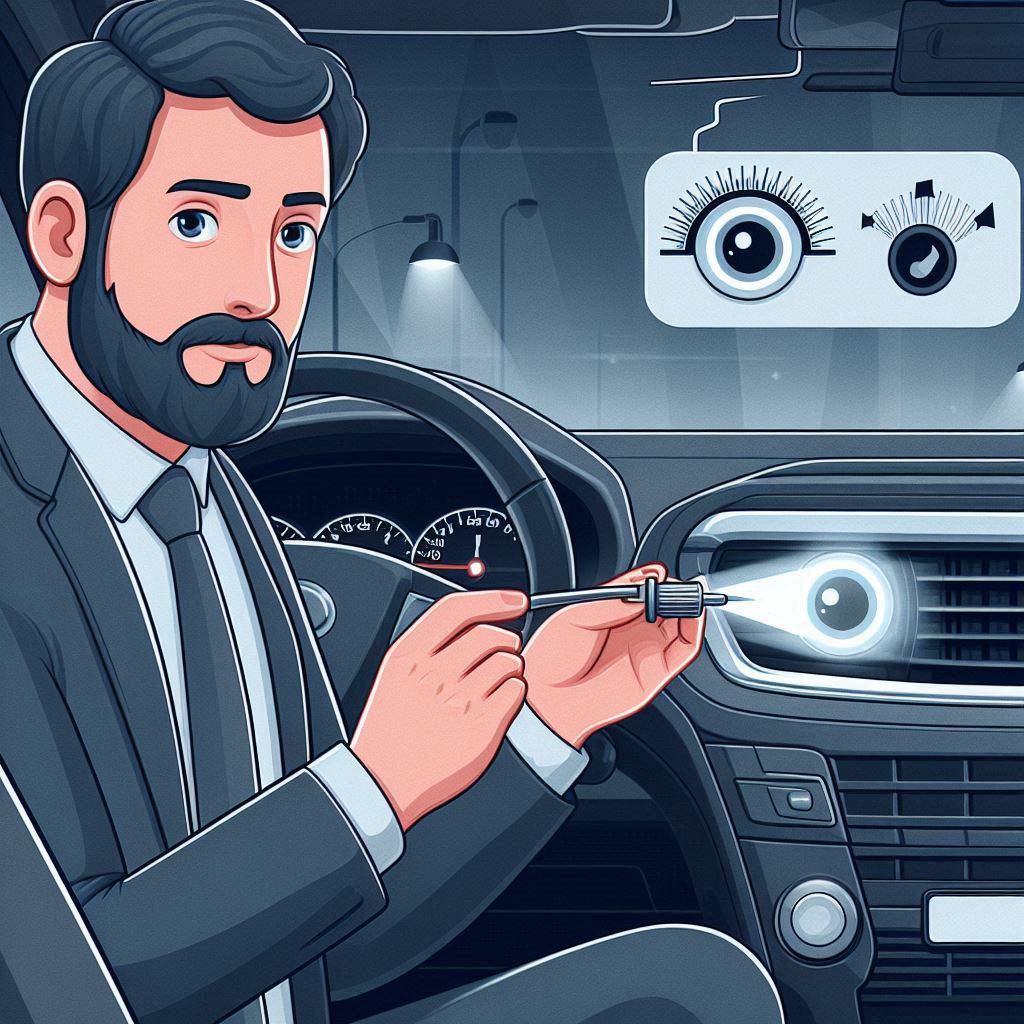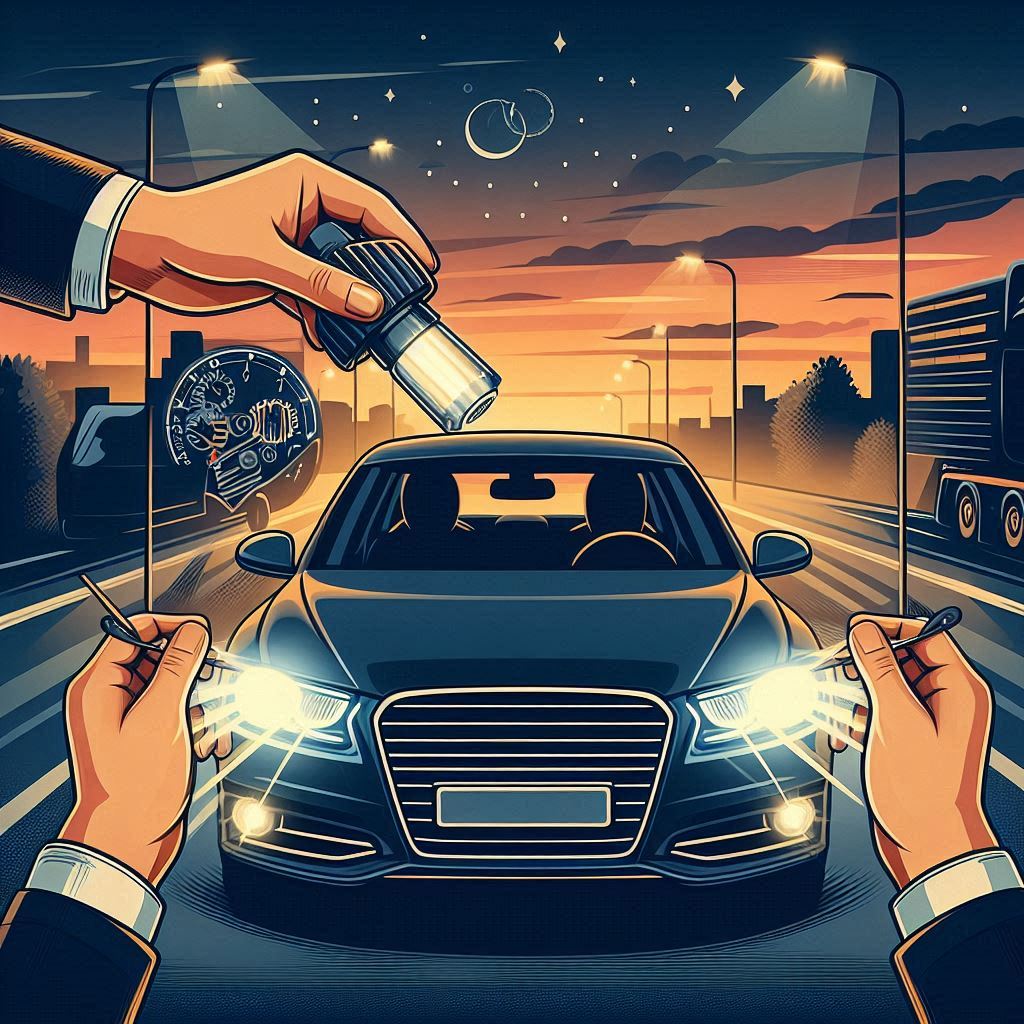
How do you adjust your car's lights yourself? 5 steps
How do I adjust my car's dipped headlights myself?
Correctly adjusting your dipped headlights is not only about driving comfort, but above all about the safety of all road users. Here is a simple 5-step guide on how to adjust the lights in your car yourself.

5 steps to correct light setting
Step 1: Vehicle and site preparation
Before adjusting the lights, make sure that:
- The car stands on a level surface
- Tyre pressure is correct
- The luggage compartment is not loaded
- You have a 10 m clear space in front of your vehicle
- The surface in front of the car is flat
- It is suitably dark
Step 2: Marking the control points
On the wall or gate you should:
- Mark the centres of the headlights
- Draw a horizontal line
- Draw vertical lines through the centres of the reflectors
- Measure 10 cm below for the light/shadow boundary
Dipped beams - correct adjustment
Step 3: Checking the current setting
Switch on the low beam and check:
- Is the boundary between light and shadow clear
- Does the light beam fall evenly
- Do the headlights shine symmetrically
- Is there no discolouration or shadows
Step 4: Adjusting the height of the lights
Using the knob on the car or adjusting screws:
- Set the correct light height
- Check that the light border is 10 cm below the marked line
- Ensure that both headlamps are at the same height
Reflector - fine adjustment
Step 5: Fine-tuning the settings
In each spotlight you will find:
- Vertical adjustment screw
- Screw for horizontal adjustment
- Sometimes an additional screw for side correction
Check light alignment - verification
Dipped beam range
Properly adjusted dipped headlights should:
- Illuminate the road 40-50 metres in front of the vehicle
- Have a clear boundary between light and shadow
- Do not dazzle other road users
Traffic lights - differences in alignment
Unlike dipped headlights:
- They shine further and higher
- They do not have a sharp boundary between light and shadow
- Used to illuminate the road in the absence of other vehicles
Common problems and solutions
Misaligned lights - signs
Lights need adjustment when:
- Blinding other drivers
- Unevenly illuminate the road
- They have a blurred boundary between light and shadow
- They shine asymmetrically
Malfunctioning lights
Check:
- Is the bulb operational
- Whether the lens is fogged up
- Is the reflector undamaged
- Is the electrical installation working properly
When to see a specialist?
Vehicle inspection - situations requiring a visit
A visit to a vehicle inspection station is necessary when:
- You cannot get the correct setting
- The headlamp is damaged
- Suspension components replaced
- Lights strongly dazzle others
Safety rules
Remember:
- Regular checking of lights is essential
- Incorrect setting risks a fine
- If in doubt, consult a specialist
- Safety is paramount
Correct positioning of lights - benefits
- Improved visibility of the road
- Greater security
- Comfort of other drivers
- Avoiding fines
Correctly adjusted lights are the basis for safe driving. If you are unsure of your technical skills, you can always get help from a professional workshop.
Incorrect use of lights
Avoid:
- Misuse of traffic lights
- Driving with daytime running lights at night
- Ignoring burnt-out light bulbs
The most important safety rules
Correct positioning of lights - standards
Lights should:
- Illuminate the road at an adequate distance (40-50m for dipped headlights)
- Have a clear boundary between light and shadow
- Do not dazzle other road users
- Shine symmetrically
Manual light control - comments
When making adjustments, remember:
- Work with cold headlights
- Use the right tools
- Be careful with electrical installation
- Document the changes
Summary
Adjusting the lights yourself is possible, but requires accuracy and patience. If in doubt, it is always better to go to a specialist. Correct adjustment of the lights is essential for road safety.
FAQ - Frequently asked questions
- How much does it cost to have the lights adjusted at a workshop? 30-100 zł
- Can you check your lights for free? Yes, during the "Your Lights - Our Safety" campaign.
- How often do I check the alignment of my lights? At least once a year and after every bulb change


